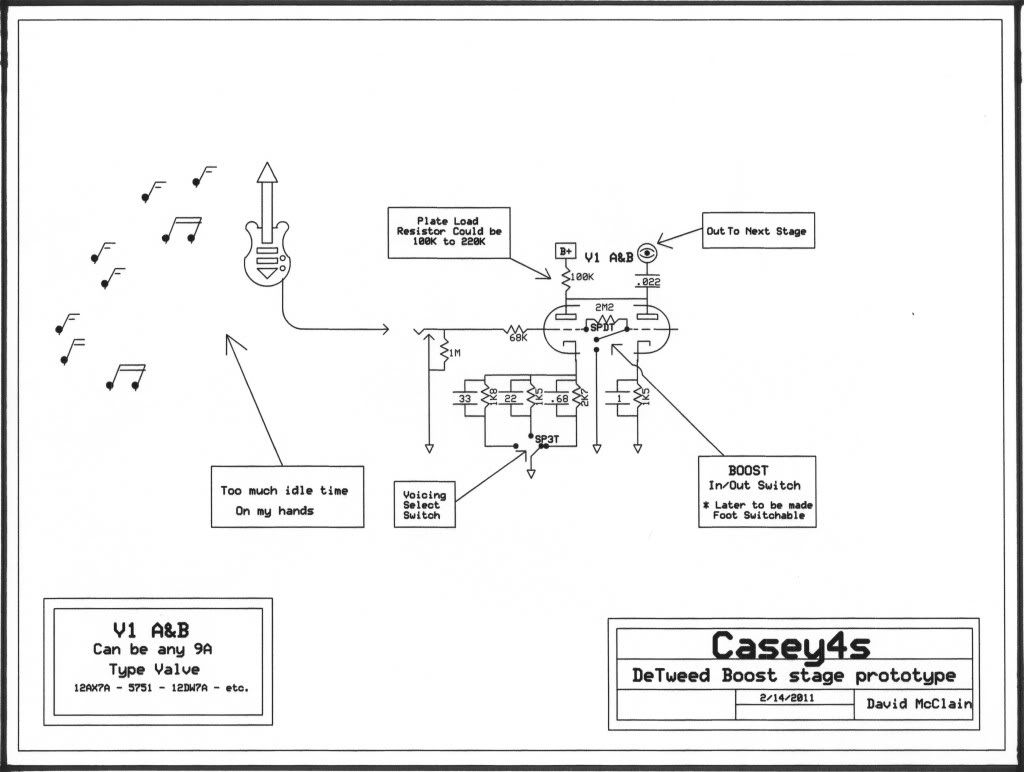So I went a little nuts looking for something to do, so I tore into the 5F6A Tweed Bassman clone I scratch built in 1998/99. When I got finished it turned into a killer sounding combo amp but all the "Tweed" is gone. I am not quite sure what to call this amp now so I just refer to it as my "DeTweed" combo amp.
I started at the first stage and gave myself 3 different switchable voices (load lines) to choose from.
Then I added the Weber Active Tone Stack in place of the usual drain to ground tone circuits from Fender, Vox, Marshall etc. Wow what an impact it has on my over all tone. The midrange is the most "dynamic" of the three controls in my application. I am still tweaking this a bit.
I changed the Presence circuit from the Tweed style to the 6G6 style and that made a little improvement in it's performance.
I left the PI alone, but I added a Post PI Master Volume control to the power amp making the original volume control the master GAIN control. This improvement alone is well worth a few dollars in parts and little time it took to do this mod.
Then I went back and orphaned V1-B to use later for an upcomming modification. Either as a reverb recovery OR as a Boost stage to V1-A
I had to stiffen up the power filtering a bit, and I am waiting on parts for the final version, it's a bit "stiff" right now. At the moment I am at 80 - (choke) 40 - 20 - 16 I want to end up with 60 - (choke) - 40 - 20 - 8. I ran the Duncan simulator to choose this combination.
I added a Hum Balance pot which eliminated the little bit of heater noise I did have. Another good choice in my case.
As long as I was playing around in the power supply I decided to add a Solid State - Tube rectifier switch just for grins and giggles. A simple no brainer install and was dirt cheap to do. I get about a 40VDC gain at the first filter.
While I was doing all this over a several week period I changed all of the signal and coupling caps. In the Active Tone stack I used the AES foil in oil MOD capacitors. The .1 coupling caps are paper in oil (PIO) great big orang ones but I don't know the (US) brand. The remaining two .022 caps are those Russian PIO caps that are flooding the market at the moment.
I forgot to mention in the beginning of this post that when I originally built my 5F6A I built it with a 4x6V6 power amp instead of 2x5881/6L6. I also added 1.5K swamper resistors and 1 ohm bias test resistors to the power amp.
I completely re-tubed the amp from preamp to rectifier with all brand new NOS tubes.
I know everyone here already knows what a 5F6A Tweed bassman schematic looks like but... http://www.el34world.com/charts/Schemat ... _schem.pdf
So here is what my severely "De Tweeded" Bassman? looks like on paper. This is "As Built"


Any comments, questions, remarks, observations, wise cracks?








